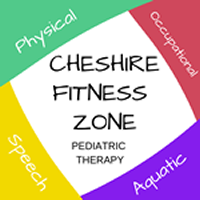Aquatic therapy has become an essential component of pediatric care, offering children a dynamic and engaging way to enhance their physical and developmental health. At its core, pediatric aquatic therapy combines the therapeutic benefits of water with targeted interventions, helping children with a variety of conditions improve mobility, coordination, and confidence. Whether it’s enhancing gross motor skills or providing sensory integration, aquatic therapy plays a vital role in comprehensive pediatric treatment plans.
What is Pediatric Aquatic Therapy?
Pediatric aquatic therapy is a specialized form of physical therapy conducted in a water-based setting. By utilizing aquatic therapy techniques, therapists can leverage the properties of water to reduce pressure on joints, increase resistance for strength-building, and support better body movement. These sessions are specifically designed for children and often incorporate games and activities to keep therapy fun and engaging.
This form of therapy is ideal for a wide range of pediatric conditions, including developmental delays, neurological disorders, orthopedic injuries, and post-surgical rehabilitation. One of the most profound applications is aquatic therapy for autism, where the calming effects of water and structured routines can significantly benefit children with sensory challenges.
Key Benefits of Aquatic Therapy for Kids
The benefits of aquatic therapy for kids are both physical and emotional. In water, children experience greater freedom of movement thanks to buoyancy, which allows for increased flexibility and range of motion. The natural resistance of water promotes muscle strength and endurance, while also improving balance and coordination.
For children who face anxiety or fear with traditional therapy settings, the pool environment can be soothing and encouraging. The warmth and support of water provide a unique setting that enhances relaxation and focus. For children with special needs, such as cerebral palsy or Down syndrome, aquatic therapy offers a safe space to build strength, practice motor planning, and experience social interaction.
Aquatic Therapy for Children with Special Needs
One of the most impactful applications of pediatric aquatic therapy is for children with special needs. The water’s buoyancy helps reduce the effects of gravity, allowing children to practice movements that may be difficult on land. Aquatic therapy for children with special needs often includes individualized activities to support posture, motor function, and coordination.
For example, children with low muscle tone benefit from resistance exercises in water that are gentle yet effective. Conversely, children with high tone or spasticity may experience muscle relaxation due to the warmth and hydrostatic pressure of the pool. These sessions are carefully designed by experienced therapists to ensure each child’s specific developmental goals are met.
Aquatic Therapy for Autism
Aquatic therapy for autism has been recognized for its ability to enhance focus, promote sensory regulation, and improve motor planning in children on the spectrum. The consistency and structure of therapy sessions in a calming aquatic setting can significantly reduce sensory overload. Children often find joy and success in the water, increasing their willingness to participate in therapy and build critical skills over time.
Equipment Used in Pediatric Aquatic Physical Therapy
Aquatic physical therapy equipment plays a crucial role in the success of therapy sessions. At advanced pediatric centers, you’ll find specially designed tools such as flotation devices, underwater treadmills, resistance bands, aquatic dumbbells, and pool noodles. These tools help children work on strength, endurance, balance, and functional mobility in a fun and interactive way.
The use of aquatic physical therapy equipment is tailored to each child’s needs and can be modified as the child progresses. This ensures therapy remains both challenging and rewarding.
Conclusion
Pediatric aquatic therapy is a powerful, versatile intervention that supports children’s physical, sensory, and emotional development. Through the use of evidence-based aquatic therapy techniques, children—especially those with special needs or conditions like autism—can achieve significant milestones. With the right environment, experienced therapists, and specialized aquatic physical therapy equipment, therapy becomes a transformative experience.
As awareness grows around the benefits of aquatic therapy for kids, more parents are discovering how this water-based approach can unlock their child’s potential in a safe, supportive, and joyful setting.


